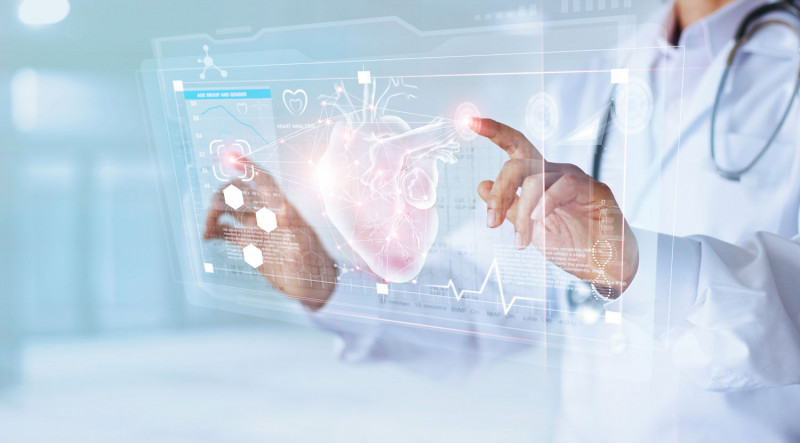
What is Electrophysiological Study (EPS)?
Electrophysiological study (EPS) is an interventional test used for diagnosing arrhythmia, which is the rhythm disorder of heart. In this procedure, electrodes are advanced into the heart through intravenous access and intracardiac electrical records are obtained. The heart is externally stimulated with a device and the electrical responses the heart gives to the stimulants are assessed and rhythm disorders can be diagnosed.
Electrophysiological study should not be performed at the initial stage of diagnosing arrhythmia. The procedure should be utilized when other diagnostic methods such as ECG, holter monitoring or event recorders are insufficient and/or to understand the mechanism of arrhythmia that require treatment.
What is ablation?
Ablation is a method used in treatment of arrhythmia. The procedure commonly referred as “burning” treatment.
How is ablation treatment performed?
In ablation procedure, the aim is to eliminate the focus that causes arrhythmia in the heart using various energies with a special electrode or balloon catheter advanced into the heart through intravenous access. For ablation procedures, depending on the cause of arrhythmia, radiofrequency (RF), cautery or cryofreezing energy types may be utilized.
What is a pacemaker?
Pacemakers are devices used for treatment of arrhythmias which cause slowing in cardiac rhythm. Pacemakers are placed in the ribcage below the collarbone in close proximity to the shoulder below skin and muscles. Pacemaker electrodes are placed in the related cardiac chamber through the vein originating from the arm and extending into the heart, which are then connected to the generator.
All pacemakers are basically comprised of 2 parts; generator and electrode. Depending on the specifications of the pacemakers, one or more electrodes may be required. Generator is a device in which a battery producing energy, a circuit regulating function of the battery and connection port of the electrodes are combined in a box. Electrodes are cables that enable connection between the pacemaker and the heart.
What types of pacemakers are available?
Pacemakers can be taken into two main groups. Those are:
I. Temporary pacemakers:
These are the devices utilized in treatment of temporary slowing in heart rhythm or problems of the electrical system or in emergency cases where permanent pacemakers are required for treatment in the intermittent period until the permanent pacemaker can be placed.
II. Permanent Pacemakers: These are devices with one or two electrodes, which are utilized in treatment of permanent stimulation and conduction problems in the cardiac rhythm. Diameters of electrodes are approximately 3 to 4 mm with lengths varying from 50 to 70 cm. While sizes of pacemaker devices vary depending on brand and model, they measure 3-6x3-5 cm in size and weigh 10-30 g.
What is implantable cardioverter defibrillator (ICD)?
In addition to features of conventional permanent pacemakers; these devices are used in treatment of potentially lethal arrhythmia, may eliminate rapid arrhythmia with specialized maneuvers (ATP: Anti-tachycardia pace) and apply shock treatment. These devices are utilized in treatment of patients with histories of previous cardiac arrest or arrhythmia which may lead to cardiac arrest (ventricular tachycardia, etc.) or patients who are under risk of such conditions. While sizes of ICD devices vary depending on brand and model, they measure approximately between 30 and 50 cc and 60 and 90 grams.
Which pacemakers or ICDs (CRT-P and CRT-D devices) are used for treatment of heart failure?
These devices are used in treatment of patients with heart failure, lowered heart functions and certain problems related to conduction system of the heart, such as left branch block or intraventricular conduction delay. In addition to features of pacemakers and ICD devices, the devices can be utilized for treating heart failure concomitantly with other treatments for eligible patients. The devices contain three electrodes.
The In Vitro Fertilization implies fertilizing a human oocyte with a human sperm at the laboratory settings and transferring the resultant embryo into the womb.
The robotic rehabilitation is a treatment modality used to restore the walking ability in patients with total or partial loss of the gait function. The robotic rehabilitation is an evidence-based treatment that also involves virtual reality processes.
All pre-and post-operative procedures of the kidney transplant are extremely crucial for the health of both the recipient and the donor.
The check-up examinations allows treatment of the diseases successfully before the condition progresses to the symptomatic stage, as it ensures early diagnosis of many diseases.
An aesthetic look is important for most women. Certain processes that can cause deformities in women's body can make them feel unhappy and desperate.
Breast cancer is the most common type of cancer in women not only in our country but also worldwide.
As coronavirus (COVID-19) pandemic progresses, scientists teach us more about the virus and how it progresses.